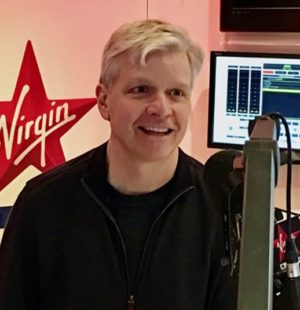
(By Ken Benson) For as long as I can remember, programmers have been taught lifelong music tastes are formed during the teenage years and there is plenty of research to support this long held belief. But data released last month by Luminate challenges this widely held assumption.
For Gen X-ers “music from the 80s and 90s could have more staying power than other decades. This is because younger generations listen to music that was relevant before they were teenagers/young adults at much higher rates than previous generations, while listening to music that was relevant during in their teen years at lower rates” according to Luminate.
Is should be no surprise then the Classic Hits format playing music primarily 80s music is the most popular format in the Top 25 US Radio markets* – Classic Hits stations were ranked in the Top 3 in 17 of the top 25 American radio markets according to the June 2022 Nielsen PPM ratings.
Meanwhile Luminate reports the digital consumption of current titles continues to decline whilst catalog streaming has increased 19% so far in 2022. And a song from 1985, Kate Bush “Running Up That Hill” was the #1 song in the world for several weeks in July (decades after its 1985 release) on the Billboard Global 200 chart.
“We are in the worst Doldrums music cycle in history” declared Guy Zapoleon, earlier this summer.
So, what does all this mean if you are programming a music format?
- Question established programming philosophies. They may not be relevant anymore.
- Open your mind to consider new possibilities. Mixing eras and genres that we once believed weren’t possible may work today.
- Stay on top of trends. There’s more data than ever available to programmers, look beyond the traditional tools to identify changing consumer tastes and interests.
Success will come today to those willing to throw out the old playbook, challenge the status quo and have the courage to rewrite the rules.
Ken Benson is an award-winning contemporary radio programmer. He is a co-founder and partner in P1 Media Group, providing insights and strategies to leading media companies around the world. He can be reached at [email protected]






Great post Ken. So logical when you think about it. When that ‘philosophy’ was made it was probably correct because it was in or all around music’s strongest years. Now, we’ve seen younger people gravitate towards CRock and CHits and just gold in general from back in the day for years now. Until this post I never really gave it the same kind of scrutiny as you pointed out. 2 + 2 doesn’t equal 4 anymore.
And make no mistake, what you say on music, is indeed right on target, as well!!
I just wish the people who thought the way you do would all be in positions to do this.
Unfortunately, those decisions are likely made by only for people in the country and they are sitting in a corporate office somewhere.
It doesn’t have to be that way, however!
Great thoughts here on music…
At the same time, no matter how the music is sliced and diced, it also depends on what’s actually BETWEEN the songs on ANY radio station.
We are way past the point of being a streaming service for a collection of songs, no matter what the songs.
Streaming, satellite and self-curation have already beaten radio handily in that space. And frankly, that’s OK. If it were only about music, we really don’t need local radio stations anyway. Of course, that’s where this is all going.
A music station must appeal to a well-defined target and live and breathe FULLY in that space.
People are looking for a much greater connection and much more relevance in their hometown than just being a playlist service. Of course, the comments on music and staying on top of trends and using the research available is extremely important.
So it’s not “either/or.” It’s “and.”
A radio station must include strong influencers in the community and create a vibe that includes the music and the lifestyle of the local target. That kid of person gives the station the credibility and connects with the music. Somehow, that dude with a gray goatee, Led Zeppelin t-shirt, gas station sunglasses and an old ball cap, just doesn’t say hip to a 22-year-old alternative listener.
By nature and because of a forced necessity, most radio people are “indoor cats.” Radio must have cool “outdoor cats.” And those “outdoor cats” must be highly identifiable and identified with the audience. They must “look like the brand” and live it on multiple platforms, with radio being their home-base.
That’s simply not happening in radio as much as it needs to.
Unfortunately, it’s also how the industry is led.
Just create some music playlists and let ‘em rip across the country in five different music formats – and nothing else except for the station name, which gets inserted into the generic national content. That’s about all of what much of radio is today.
It really doesn’t have to be!
Unfortunately no matter what songs you play, if what you do between the songs sounds like 1972, which in many cases music stations do, you’re probably not going to attract someone who might be interested in a pop format, for example. You immediately become unhip. And in some cases, actually a joke.
Why do satellite and streaming services pick on radio for not being like them? Why do they run promos ripping on radio? They do it because we still have some audience, yet try we to chase their industry at what they’re really good at. But guess what? We really suck at being “them.”
Radio is more than a collection of songs.
Solely chasing playlists is like trying to save the deck chairs on the Titanic.
Radio is fundamentally a local business, and when combined with music as part of a greater overall local experience, it does very well!!